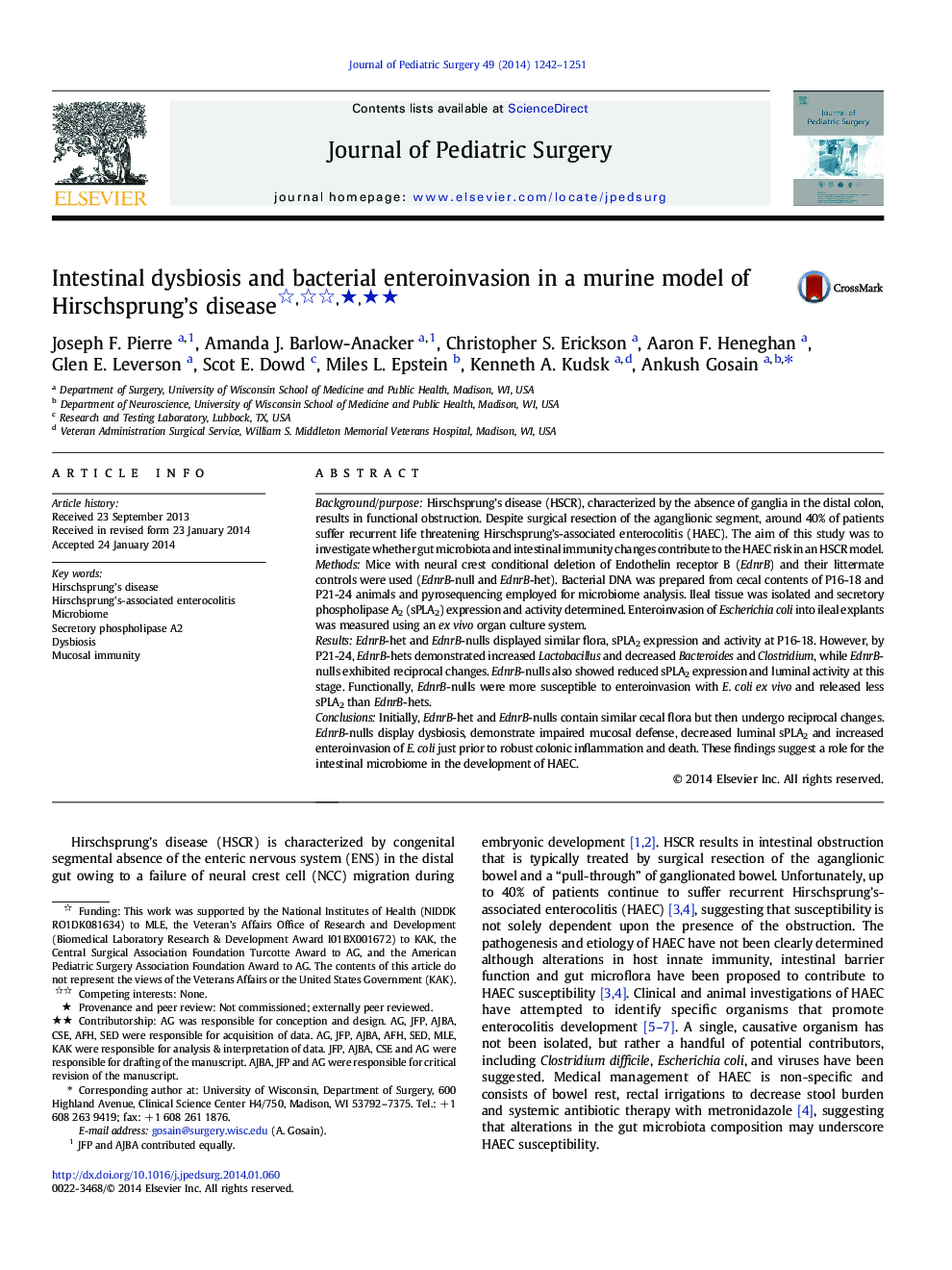| Article ID | Journal | Published Year | Pages | File Type |
|---|---|---|---|---|
| 4155782 | Journal of Pediatric Surgery | 2014 | 10 Pages |
Background/purposeHirschsprung’s disease (HSCR), characterized by the absence of ganglia in the distal colon, results in functional obstruction. Despite surgical resection of the aganglionic segment, around 40% of patients suffer recurrent life threatening Hirschsprung’s-associated enterocolitis (HAEC). The aim of this study was to investigate whether gut microbiota and intestinal immunity changes contribute to the HAEC risk in an HSCR model.MethodsMice with neural crest conditional deletion of Endothelin receptor B (EdnrB) and their littermate controls were used (EdnrB-null and EdnrB-het). Bacterial DNA was prepared from cecal contents of P16-18 and P21-24 animals and pyrosequencing employed for microbiome analysis. Ileal tissue was isolated and secretory phospholipase A2 (sPLA2) expression and activity determined. Enteroinvasion of Escherichia coli into ileal explants was measured using an ex vivo organ culture system.ResultsEdnrB-het and EdnrB-nulls displayed similar flora, sPLA2 expression and activity at P16-18. However, by P21-24, EdnrB-hets demonstrated increased Lactobacillus and decreased Bacteroides and Clostridium, while EdnrB-nulls exhibited reciprocal changes. EdnrB-nulls also showed reduced sPLA2 expression and luminal activity at this stage. Functionally, EdnrB-nulls were more susceptible to enteroinvasion with E. coli ex vivo and released less sPLA2 than EdnrB-hets.ConclusionsInitially, EdnrB-het and EdnrB-nulls contain similar cecal flora but then undergo reciprocal changes. EdnrB-nulls display dysbiosis, demonstrate impaired mucosal defense, decreased luminal sPLA2 and increased enteroinvasion of E. coli just prior to robust colonic inflammation and death. These findings suggest a role for the intestinal microbiome in the development of HAEC.
